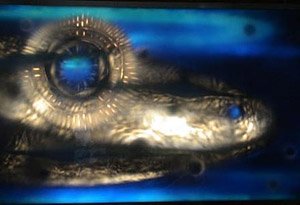Frank Joseph Malina (1912-1981) is a renowned artist and scientist with Czech family pedigree. Alongside Nicolas Schöffer he is considered to be an important pioneer of kinetic art. His fascinating life career is composed of two main stories – first of an experimental creator who invented original light-kinetic systems that allowed him and other artists too to produce sui generis moving abstractions, and the second of a world-famous scientist known as the "godfather" of U.S. space program. He closely collaborated with a mathematician Theodor von Kármán and finally developed the first rocket to break the 50-mile altitude mark, becoming the first sounding rocket to reach space. However, right after the WW2 he quit his scientific duties and moved to Europe where he joined then newly established UNESCO. His responsibility was to support development of science and to supervise research of Earth’s driest areas. His artistic career began in 1953. He also exhibited in Prague - František Šmejkal produced his show in 1966. Two years later Malina founded a revue for art, science and technology named Leonardo. New tradition was established at that moment of artists being encouraged to describe their artistic experiments with technology and scientific concepts in a way similar to explanatory papers. The purpose was, of course, to examine and document possibilities of art to evolve, not to get trapped in a circuit of hermetic "a bit too deep interpretations" characteristic of the mainstream artworld. Today published by MIT Press, Leonardo is a leading journal for exchange of ideas among artists and researchers for whom creativity and technology is a common denominator. A lecture by the French PhD candidate Fabrice Lapelletrie who is writing about Malina’s oeuvre in the perspective of interdisciplinary dialogue of the 50s, 60s and 70s will highlight a period when new technologies initiated parallel development in art.
Malina occupies an important place in kinetic art. He belongs to the trend inaugurated by Thomas Wilfred that could be termed informal in opposition to the constructivist and geometric tendency of a large number of kinetic artists whose principal forerunner was Laszlo Moholy-Nagy. (Frank Popper)
